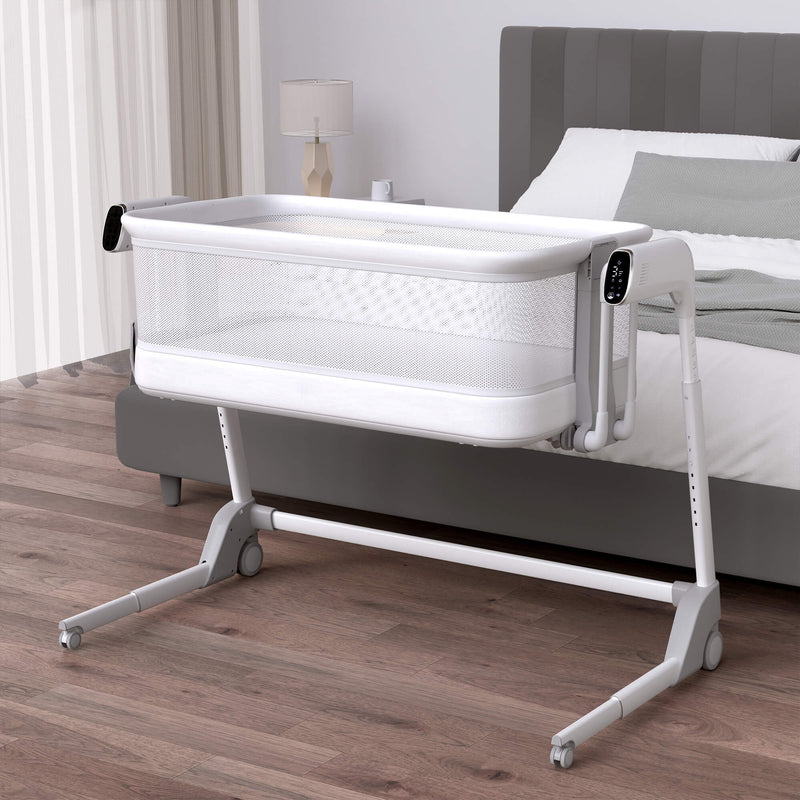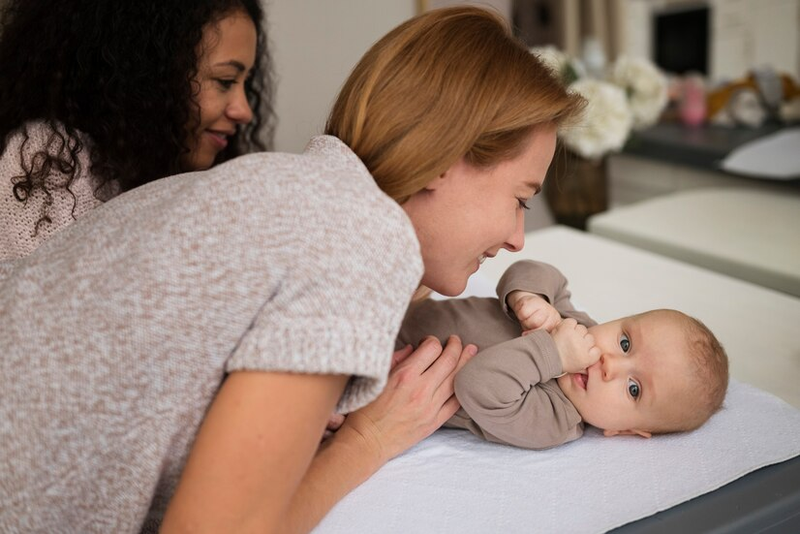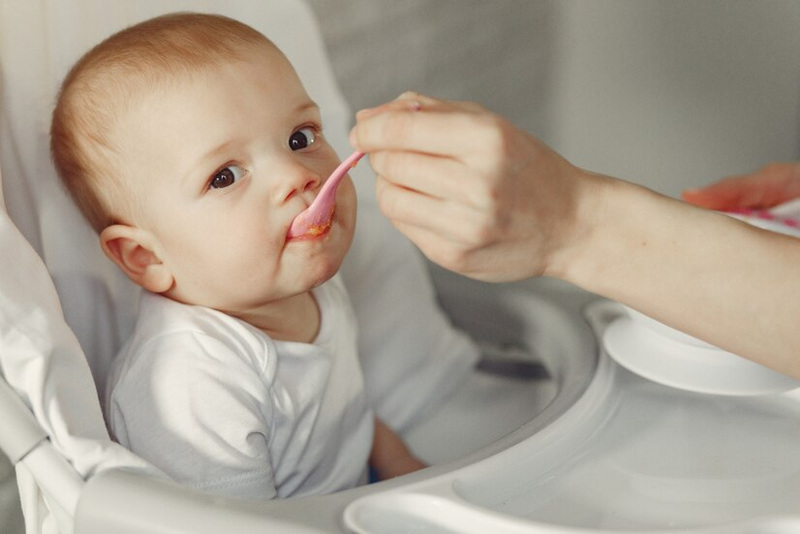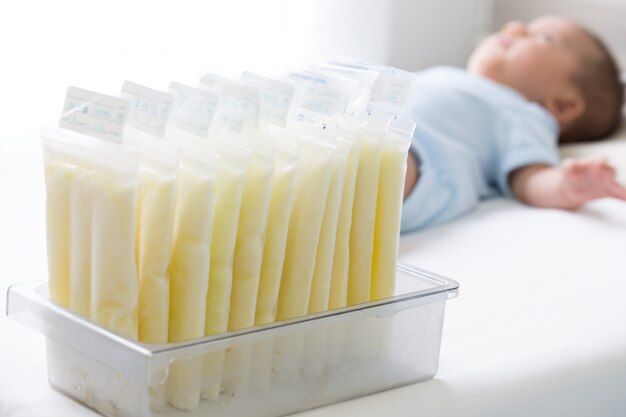
Complete Guide: How to Clean a Bassinet & Mattress - Step-by-Step Instructions
Keeping your baby's sleeping space clean is essential for their health and comfort. This comprehensive guide covers everything from daily maintenance to deep cleaning your bassinet and mattress, including specific instructions for popular models like UPPAbaby. Why Regular Bassinet Cleaning Matters Babies can be messy! Between spit-up, diaper leaks, and everyday dust accumulation, your baby's bassinet requires regular cleaning to maintain a hygienic sleep environment. A clean bassinet not only looks better but helps prevent potential allergens and ensures your little one has a safe, fresh place to sleep. Regular cleaning is particularly important because: It prevents buildup of allergens that could trigger respiratory issues It removes harmful bacteria from surfaces where your baby sleeps It extends the lifespan of your bassinet It provides peace of mind about your baby's sleep environment Essential Supplies for Cleaning a Bassinet Before starting the cleaning process, gather these supplies: Dust cloth or soft brush Clean washcloths Mild baby-friendly soap or detergent Baby-safe disinfectant or sanitizing spray Spray bottle (for cleaning solution) Vacuum with upholstery attachment (for mattress) Gentle stain remover (for stubborn spots) Clean towels for drying Avoid harsh chemicals that might irritate your baby's sensitive skin. Products specifically formulated for babies are best, but mild, fragrance-free options work well too. Step-by-Step Guide to Clean a Bassinet Step 1: Check Manufacturer's Instructions Always start by reviewing the care instructions for your specific bassinet model. Different materials (wood, metal, plastic) and fabrics require different cleaning approaches. The manufacturer's manual will provide guidance on: Which parts can be removed What can be machine washed Recommended cleaning products Special care instructions for electronic components (for electric bassinets) If you've misplaced the manual, most manufacturers offer digital versions online. Step 2: Disassemble the Bassinet Remove all detachable parts according to the manufacturer's guidelines: Bassinet mattress Fitted sheets and mattress covers Canopy or hood Fabric liners Mesh panels (if removable) Storage baskets Separate items into two categories: machine-washable and spot-clean only. Step 3: Vacuum the Bassinet Before applying any cleaning solutions: Use a vacuum with upholstery attachment to remove dust, hair, and loose particles from the mattress Vacuum the bassinet frame, paying special attention to crevices and corners For mesh sides, use the vacuum on low suction to avoid damaging the material This step removes surface debris that might become muddy when wet-cleaned. Step 4: Machine Wash Eligible Components For machine-washable parts: Check for stains and pre-treat if necessary Place smaller items in mesh laundry bags to protect them Use a gentle cycle with cold water Choose a mild, baby-safe detergent Avoid fabric softeners, which can reduce flame-retardant properties Air dry or use low heat settings according to care instructions Most bassinet sheets, removable fabric liners, and some mattress covers are machine washable. Always check labels before proceeding. Step 5: Clean the Mattress The bassinet mattress requires special attention since babies spend most of their time here: For spot cleaning (recommended for most bassinet mattresses): Mix a mild soap solution in a spray bottle Lightly spray the stained area (don't saturate) Gently blot (don't rub) with a clean cloth Allow to air dry completely before reassembly For stubborn stains: Create a paste of baking soda and water Apply to the stain and let sit for 15-20 minutes Wipe away with a damp cloth Air dry thoroughly Most bassinet mattresses cannot be fully immersed in water or machine washed as this can damage their internal structure and create a mold risk. Step 6: Clean the Bassinet Frame and Mesh For the bassinet structure: Wipe down the frame with a cloth dampened with mild soap solution Pay special attention to areas that come in contact with your baby For wooden frames, use minimal moisture and dry immediately For mesh panels, gently wipe with a soft cloth and mild soap Rinse by wiping with a clean, damp cloth Dry thoroughly with a clean towel For bassinets with non-removable mesh sides: Mix a small amount of mild detergent with warm water Dip a soft cloth in the solution and wring until barely damp Gently wipe the mesh in a circular motion Follow with a clean, damp cloth to remove soap residue Allow to air dry completely Step 7: Sanitize All Surfaces Once everything is clean and dry: Use a baby-safe disinfectant spray on non-fabric surfaces For fabric surfaces, check if your disinfectant is fabric-safe Let the disinfectant sit for the recommended time on the label Wipe down with a clean cloth if required Allow to air dry completely Step 8: Reassemble the Bassinet After all components are thoroughly dry: Start with the frame and main structure Add the mattress Apply clean fitted sheets and covers Reattach any accessories according to manufacturer instructions Ensure everything is secure before placing your baby back in the bassinet Step 9: Regular Maintenance To keep your baby bassinet clean between deep cleanings: Change sheets at least weekly (more often if soiled) Wipe up spills and spit-up immediately Dust the frame and vacuum the mattress weekly Air out the bassinet occasionally on a dry, sunny day How to Clean Specific Bassinet Brands How to Clean UPPAbaby Bassinet The UPPAbaby bassinet requires specific care: Remove the mattress pad and cover Machine wash the mattress cover and canopy fabric on gentle cycle with cold water For the bassinet frame, spot clean using mild detergent and water Use a soft brush to clean the ventilation mesh to maintain airflow Wipe the plastic and metal parts with a damp cloth Allow all components to completely dry before reassembling How to Remove UPPAbaby Bassinet from Stroller To remove the UPPAbaby bassinet for cleaning: Locate the release button (typically on the side of the bassinet where it connects to the stroller) Press the release button while lifting the bassinet upward Lift the bassinet straight up and away from the stroller Place on a flat, clean surface for disassembly and cleaning How to Collapse UPPAbaby Bassinet for Storage When you need to store your UPPAbaby bassinet: Remove all bedding and the mattress Locate the release levers at the head and foot ends Pull both levers simultaneously while gently pressing down on the bassinet frame The bassinet will fold flat for convenient storage Ensure it's completely dry before storing to prevent mold or mildew Special Cleaning Situations Deep Cleaning After Illness If your baby has been sick, a more thorough cleaning is warranted: Follow all regular cleaning steps Use a disinfectant specifically labeled to kill germs and viruses Allow for longer contact time with disinfectant (check product instructions) Consider steam cleaning fabric components if possible (check manufacturer guidelines first) Replace any items that cannot be thoroughly disinfected Cleaning for Secondhand or Stored Bassinets For bassinets that have been in storage or purchased secondhand: Disassemble completely Check for any missing or damaged parts Follow all deep cleaning procedures Pay special attention to crevices where dust and pests might accumulate Allow to air in the sun if possible to kill any remaining germs Consider replacing the mattress if it's older or shows signs of wear Removing Tough Stains For persistent stains on bassinet fabrics: Create a paste using 3 parts baking soda to 1 part water Apply to the stain and let sit for several hours Vacuum away the dried powder For remaining stains, try a small amount of hydrogen peroxide (test an inconspicuous area first) Blot (don't rub) with clean cloth and let dry completely Advanced Maintenance Tips for Bassinets Preventing Odors To keep your bassinet smelling fresh: Sprinkle baking soda on the mattress, let sit for several hours, then vacuum Use mattress protectors under fitted sheets Air out the bassinet regularly in a well-ventilated area Keep baby items like soiled clothes away from the bassinet Store clean bassinet linens with lavender sachets (place these away from the bassinet when in use) Extending Bassinet Lifespan To maximize your bassinet's durability: Clean spills immediately to prevent staining Rotate the mattress regularly if the design allows Keep away from direct sunlight when not in use to prevent fabric fading Store properly when not in use, following manufacturer guidelines Use a machine-washable waterproof mattress protector Transitioning to a Smart Bassinet for Easier Maintenance When considering bassinet options, an electric bassinet can offer significant advantages for both baby comfort and parental convenience. Modern smart bassinets are designed with easy cleaning in mind, often featuring removable, washable components. The Maydolly 506 smart bassinet represents a new generation of baby sleep solutions that combine advanced technology with parent-friendly features. This ultra-intelligent cradle provides the safest and most comfortable sleep environment while also being easier to maintain. What makes the Maydolly 506 stand out is its fully detachable, machine-washable cover and highly breathable mattress design. Parents appreciate the dual-layer quilted cloud cover that can be quickly removed for cleaning. The innovative materials allow for better air circulation, which not only keeps baby comfortable but also reduces moisture buildup that can lead to cleaning challenges. The bassinet features automatic cry detection technology that responds to your baby's needs with gentle rocking motion and soothing sounds. With five adjustable rocking speeds and multiple height settings, it adapts to your baby's preferences while allowing for extended use as they grow. For busy parents, the lightweight aluminum alloy construction makes moving the bassinet from room to room effortless when cleaning time comes around. The generous 40.2" x 24" sleep surface—the largest among comparable products—gives your baby ample space while the breathable mesh walls provide unhindered airflow and visibility. Alternatives to Traditional Bassinets While bassinets are popular for newborns, some parents opt for alternatives that serve similar functions but offer different cleaning considerations: Bedside Co-Sleepers Bedside co-sleepers attach to adult beds and typically feature: Removable fabric sides for easy cleaning Adjustable height to match bed level Similar cleaning requirements to standard bassinets Travel Cribs Travel cribs are portable sleep solutions with: Machine-washable fabric components Lightweight frames that wipe clean Quick setup and takedown for cleaning Multipurpose Solutions Some products combine features of bassinets with other functions, such as the Maydolly units that function as both a bassinet and a baby changing table. These versatile options require thoughtful cleaning routines to maintain hygiene across different uses. Final Thoughts on Bassinet Maintenance Keeping your baby's bassinet clean doesn't have to be overwhelming. With regular maintenance and prompt attention to spills or accidents, you can maintain a hygienic sleep environment with minimal effort. Establish a cleaning schedule that works for your family—weekly sheet changes, daily quick wipes, and monthly deep cleans are a good starting point. Remember that bassinet cleanliness is about more than aesthetics—it's an important aspect of providing a healthy environment for your baby's development. By following the guidelines in this comprehensive guide, you'll ensure your little one has a clean, safe place to sleep night after night. For more baby care tips and innovative nursery solutions, visit Maydolly for a range of products designed with both baby comfort and parent convenience in mind.



















